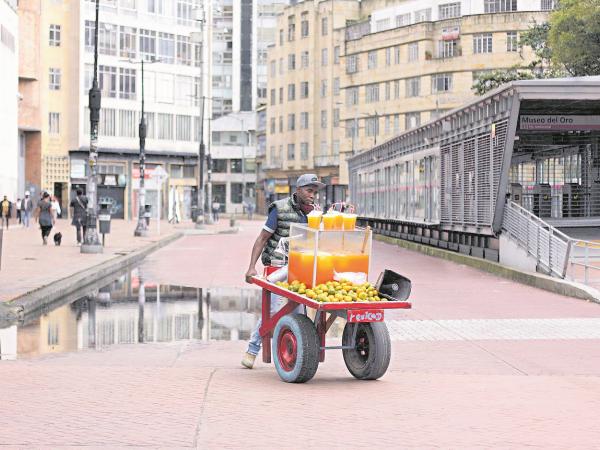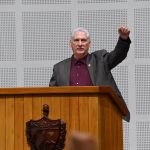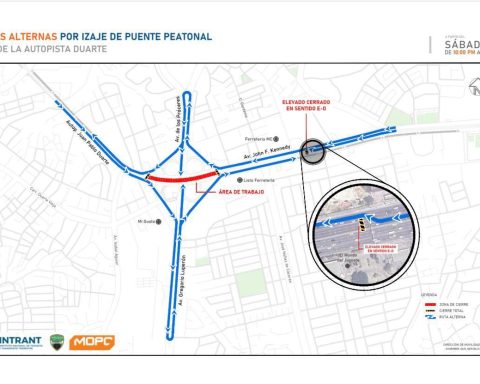When talking about economic growth in the country, one of the focuses of analysis is always centered on the performance of Bogotá, not only because it is the capital, but because together with cities such as Medellín, Cali and Bucaramanga, they constitute more than 50% of the GDP and the main drivers of issues such as employment, business generation, tax collection and boosting economic recovery.
With eight million inhabitants, Bogotá is a fundamental part of what happens in Colombia and one of the territories that receives the majority of people who leave their territories in search of better life options. Currently, it is going through a period of slow growth, since it was not immune to the threat of recession that shook the nation last year and the slowdown and the little room for getting into debt; these are two current challenges for the economic authorities at this time.
Read here: They ask Congress to return the PGN 2025 project to the Government for modification
Two reports on the Gross Domestic Product and the state of poverty and employment in the country’s capital, released this week, showed that little by little the Bogotá economy is improving, even overcoming the technical recession it experienced in the first two quarters of 2023. There are still major challenges in terms of poverty and reducing informal employment.
Insufficient growth
First is the economic growth report presented by the Department National Statistics Office (DANE) for the first quarter of 2024, which shows that the annual GDP variation for Bogotá at the start of the year was only 0.9%; thus, it was once again close to the stagnation scenario.
Informality
Jaime Moreno / Portfolio
If this figure is compared with the 3.2% for the same period in 2023 and the 10.6% reached in 2022, it is clear that the economic pace in the city remains on the decline, although it should be noted that the recession has once again been avoided and two periods in the green have been completed, after the six months with negative data observed in the second and third quarters of last year.
Data from Dane show that in this reported period, the public administration and defense sectors; especially from the subsectors of mandatory membership social security plans; education and human health care activities and social services; were the biggest drivers of this growth, after rebounding by 4.4% and contributing 0.7 percentage points to the annual variation.
More news: The millions that Bogotá has raised this year thanks to tax relief
This list of positive sectors includes construction, which grew by 23.1% and contributed 0.6 percentage points to the aforementioned figure; as well as artistic, entertainment and recreation activities and other service activities, which increased by 6.2% and contributed 0.4 percentage points to the annual variation.
However, it must also be said that within the red numbers there are Important sectors for the economy such as industry (-4.6%), financial and insurance activities (-3.2%) and information and communications (-1.1%) are appreciated, as well as trade, which on this occasion appears with a variation of -0.8% and accentuates the decline of the Bogota economy from this front.
Challenges in poverty
The Dane report was joined by the report ‘Bogotá, how are we doing in poverty and employment?’, delivered by the Universidad del Rosario, where the status of these two issues was reviewed during 2023, finding that although there have been improvements, poverty figures are still too high and require new challenges from the authorities.
“Monetary poverty, which determines what a person needs to live on a monthly basis in Bogotá, continues to decrease, going from 28.1% of people to 23.7% between 2022 and 2023. Despite this reduction, challenges remain to overcome. poverty among migrants (46.5%), women (24.5%) and young people (24.1%),” the report says.

Colombian pesos
iStock
This research adds that “extreme poverty also continues to decrease, going from 8.1% of people who did not have access to a basic food basket to 5.53% between 2022 and 2023. However, migrants (15%), followed by people belonging to an ethnic group (10%) are more poor than the Bogotá average.”
It should be noted that inequality decreased for the second consecutive year, Closing 2023 with a Gini index of 0.530; this index is measured on a scale of 0 to 1, with 0 being the level that constitutes equal distribution. Although Bogotá remains the city with the highest index in the country, the trend indicates that it would achieve the goal of reducing it to 0.49 by 2030, thus complying with the Sustainable Development Goals established by Conpes 3918 of 2018.
The latest: Recession risks in the US could play in favor of interest rates in Colombia
Andrés García, acting dean of the Faculty of Economics at the Universidad del Rosario, states that “in order to reduce multidimensional poverty in Bogotá, actions must be taken that focus on access to employment, since the work dimension, made up of indicators of informal work and long-term unemployment, are those that have had the greatest impact and contributed the most in recent years.”
Informal employment
Regarding labor informality, the report from the Universidad del Rosario warns that after the Covid 19 pandemic, Bogotá has managed to advance in its economic recovery and that the good results of the city are reflected mainly in reducing the levels of poverty, inequality, unemployment and informality.
However, she adds that despite the progress, “the current mayor’s office must continue working to consolidate the city as a diverse and inclusive economy, given that some populations such as women, young people, older people, migrants and people with self-identified ethnicity continue to face barriers to access and remain in formal employment.”

Economic growth
iStock
In 2023, 6 out of 10 people over 15 years of age were employed, That is, they had an employment rate of 62.3%. Although the city had better results than the national average, where the employment rate was 57.6%, it is crucial that more people enter the labour market, and that they do so through quality jobs that ensure stable income.
“At the population level, both the public and private sectors are called upon to continue promoting the equitable inclusion of all populations in the city’s labor market. Although labor informality reached its historical low in 2023 (32.1%), there are still barriers for migrants (70.5%), people over 55 years of age (48.5%) and young people (34.2%) to connect with formal jobs,” they concluded.
Finally, these academics pointed out that it is necessary to pay attention to the migrant phenomenon and its influence on the city, since a large part of the population that is part of the informal sector are citizens of other countries, mainly from Venezuela, which makes it clear that It is necessary to work on a policy of inclusion and skills training for these people.
















